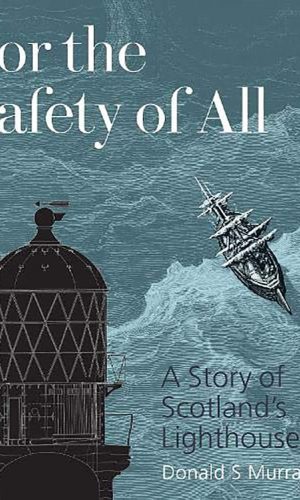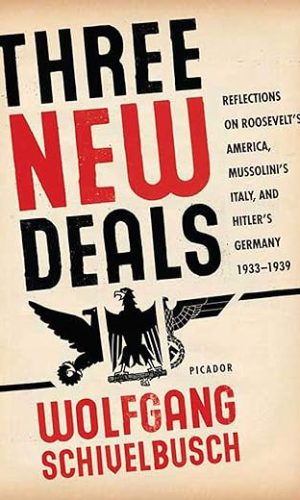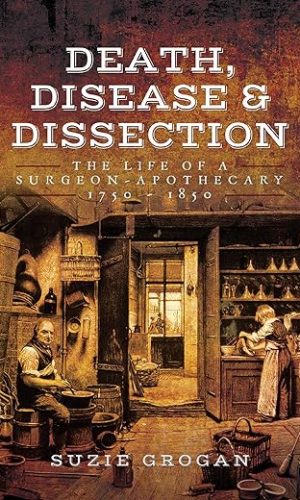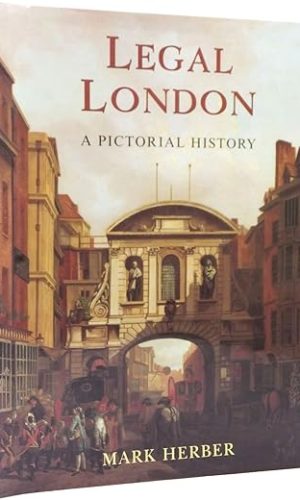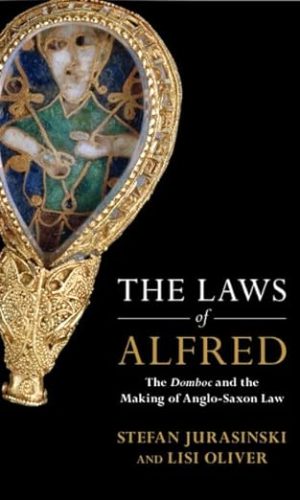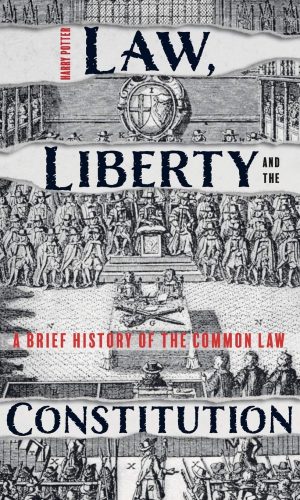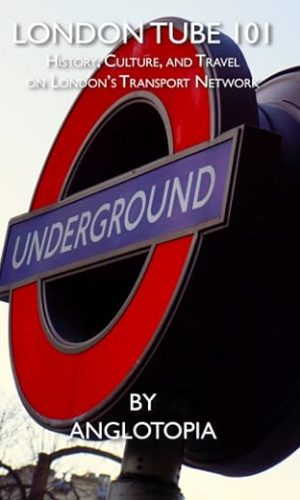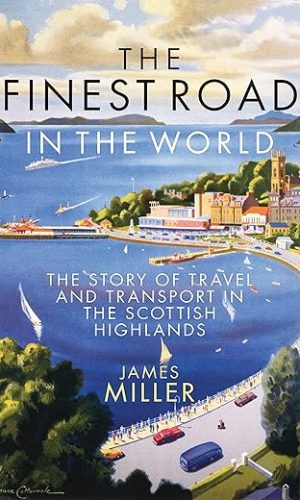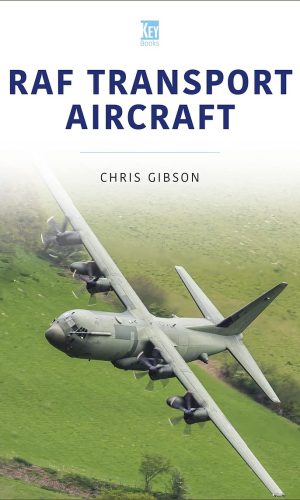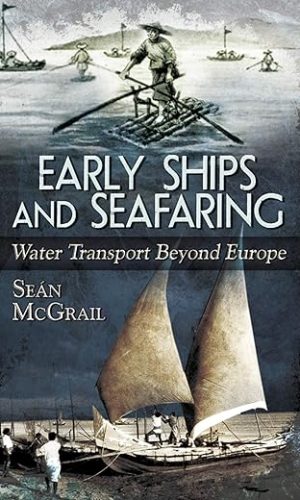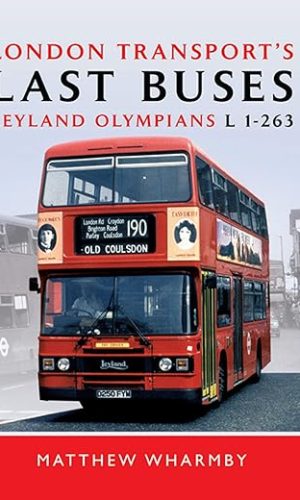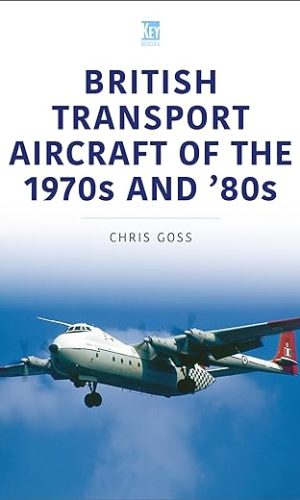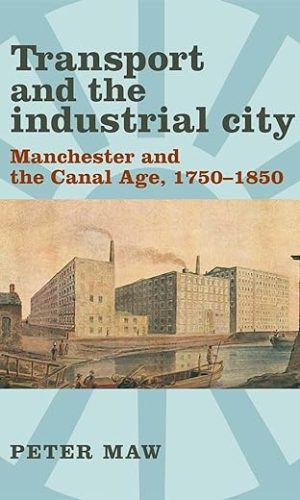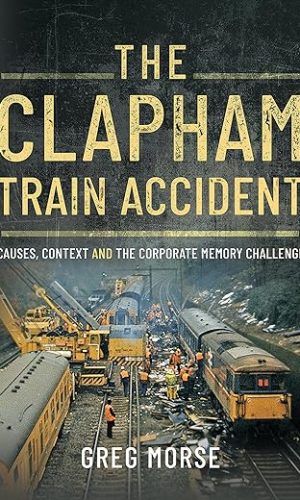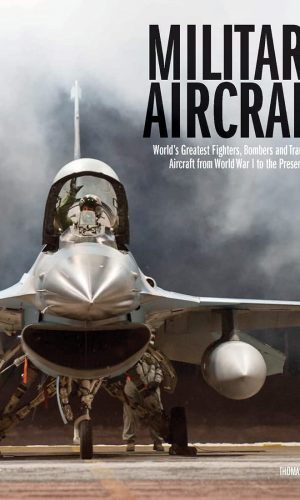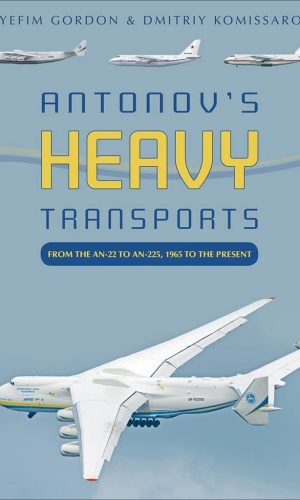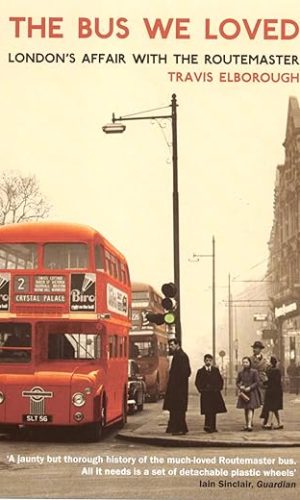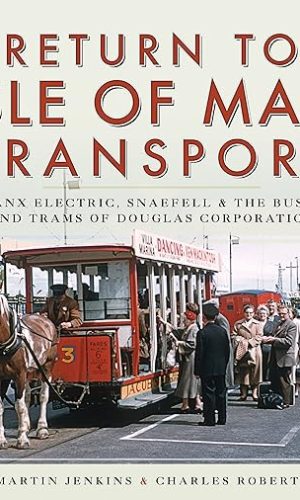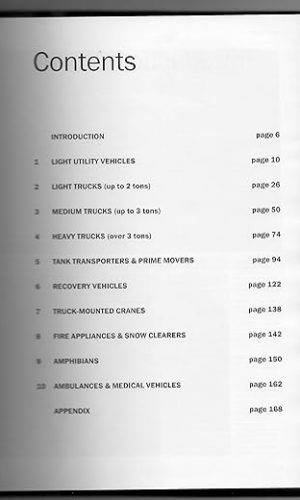-
World War 1 for Teens: Amazing Facts, Key Players, Heroic Acts, Major Battles, and How the War Changed the World (What You Need to Know)
World War 1 for Teens will give you more than just the dates, facts, and figures; it will also tell the fascinating stories of what really happened, giving you all the details of how the battles were fought, and highlighting the key players. After reading this, you will know:
● The causes of the war and who was involved.
● The major battles and the turning points of the war, along with statistics and incredible stories of heroism.
● The new technology and weapons used in the war and the effects they had.
● What it was like to be a soldier in the trenches and what trench warfare was all about.
● What Winston Churchill was doing in this war.
● How General von Hindenburg won a major victory over Russia at Tannenberg in 1914.
● Why Woodrow Wilson kept America neutral during the first half of the war and why he finally stepped in from 1917 until the end.Filled with awesome tales of heroism and bravery, you will be transported back into the middle of the First World War. Read about leaders who fought for peace, and those who only wanted more power and territory. Experience the victories and defeats as if you were on the battlefield with the soldiers.
Also, look out for these add-ons throughout the book with some incredible extra insights into the war:
❖ AMAZING FACTS
Take a jump into the muddy trenches and find out everything you can about the war that changed the modern world!
Scroll up and click BUY NOW to step into World War 1!
Great for teenagers, but also children and kids of all ages – and even adults!
Read more
£10.40 -
World War 2 for Teens: Amazing Facts, Key Players, Heroic Acts, Major Battles, and How the War Changed the World (What You Need to Know)
World War 2 for Teens will give you more than just the dates, facts, and figures; it will fill in the exciting stories of what happened by revealing the gritty details of how the battles were won and paint vivid pictures of the key players. After reading this, you will become an armchair expert on all aspects of WW2:
● The causes of the war and who was involved.
● The major battles and the turning points of the war, along with statistics and incredible stories of heroism.
● The rise and fall of Adolf Hitler; his ambitions, mistakes, and twisted ideologies that saw him win stunning victories as well as perpetrate some of the worst atrocities ever seen.
● Winston Churchill’s inspiring stand against the Germans as he rallied Britain to fight against the evil of the Axis powers.
● America’s reluctance to join the conflict and how the Japanese bombing of Pearl Harbor forced their hand, which would end up shifting the direction of the war.
● The Soviet Union’s part in WWII and their Red Army as they held off the Nazis in the Siege of Leningrad during the bitter Russian winter.
● The Holocaust and how Hitler tried to wipe out the Jews in a systematic strategy of death.Filled with incredible stories, you will find yourself back in the middle of the Second World War; face to face with leaders who shaped the course of history, fighting alongside soldiers in the heat of battle, and living through extraordinary moments with those who endured.
Also, look out for these add-ons throughout the book with some incredible extra insights into the war:
❖ AMAZING FACTS
Strap on your helmet, tighten your boots, and find out all you can about the moment in history that changed the entire world!
Scroll up and click BUY NOW to step into World War 2!
Great for teenagers, but also children and kids of all ages – and even adults!
Read more
£10.40 -
For the Safety of All: A Story of Scotland’s Lighthouses
Lighthouses punctuate Scotland’s coastline – a stoic presence on the edge of the landscape. Since the earliest of these hardy structures were raised, they have been a lifeline for seafarers at the mercy of treacherous weather and uncertain navigation. Today over 100 of Scotland’s lighthouses are listed buildings.
The lighthouse is now one of many maritime resources which act ‘for the safety of all’. But we are still drawn to the solitary life of the keeper, the beauty of the lens of the lamp and the calm reassurance of a flashing light on a distant shore.
Donald S Murray explores Scotland’s lighthouses through history, storytelling and the voices of the lightkeepers. From ancient beacons to the work of the Stevensons and the Northern Lighthouse Board, and from wartime strife to automation and preservation, the lighthouses stand as a testament to the nation’s innate connection to the sea.
Published in partnership between Historic Environment Scotland and the Northern Lighthouse Board.
Read more
£13.10£14.20 -
Three New Deals: Reflections on Roosevelt’s America, Mussolini’s Italy, and Hitler’s Germany, 1933-1939
FDR’s New Deal is today regarded as the democratic ideal, the positive American response to a crisis that forced Germany and Italy toward National Socialism and Fascism.Yet in the 1930s, these regimes were not considered entirely antithetical. In this groundbreaking work, Wolfgang Schivelbusch investigates the shared elements of these three new deals – focusing on their architecture and public works projects – to offer a new explanation for the popularity of Europe’s totalitarian systems. Writing with flair and concision, Schivelbusch casts a different light on the New Deal and puts forth a provocative explanation for the still-mysterious popularity of Europe’s most tyrannical regimes.Read more
£12.30 -
Deal & District at War
Much emphasis has been given to the Second World War experiences of East Kent’s ‘frontline’ towns of Dover, Folkestone and Thanet, but the ancient port and town of Deal suffered equally from enemy bombing and shelling. Deal bore the disadvantage of being located opposite the notorious Goodwin Sands, where many vessels and even some aircraft were lost. From the time of the Dunkirk evacuation in May/June 1940 until after D-Day some four years later, the residents of Deal withstood all that the enemy threw at them. Richly illustrated, Deal and District at War recounts many unique and controversial events which include: a German coastal raid in Sandwich Bay when at least 1 British soldier was snatched; an enemy pilot entertained by a local family after being shot down; cases of smuggling and ‘services rendered’ by Walmer lifeboat; and the world-famous ‘Lifeboat Doctor’ James Hall. This book will evoke powerful memories for those whose families experienced the war and provide fascinating reading for anyone interested in the history of Deal and District.
Read more
£12.20£14.20Deal & District at War
£12.20£14.20 -
Death, Disease & Dissection: The Life of a Surgeon-Apothecary 1750–1850
“A deep dive into the education and lives of a medical professional’s life over the span of 100 years . . . A good addition to any medical historian’s library” (The Lazy Historian).
Imagine performing surgery on a patient without anesthetic or administering medicine that could kill or cure. Welcome to the world of the surgeon-apothecary.
During the eighteenth and nineteenth centuries, significant changes occurred in medicine. New treatments were developed and medical training improved. Yet, with doctors’ fees out of the reach of ordinary people, most relied on the advice of their local apothecary, among them, the poet John Keats, who worked at Guy’s Hospital in London. These men were the general practitioners of their time, making up pills and potions for everything from toothache to childbirth.
Death, Disease & Dissection examines the vital role these men played within their communities, their training, the treatments they offered, the quacks, and the shocking sights and sounds in hospitals and operating theaters of the time. Suzie Grogan transports readers through 100 years of medical history, exploring the impact of illness and death and bringing the experiences of the surgeon-apothecary vividly to life.
“I think the author has done a wonderful job of researching the topic and presenting the history of the profession, and biographical information on some of the most influential Surgeon-Apothecaries of the period. . . . This book is well organized and full of fascinating information on the topic.” —A Line from a BookRead more
£3.80 -
The Sale of the Late King’s Goods: Charles I and his Art Collection
`So wonderful and glorious a collection, that the like will never again be met with.’ This is how one awed and wistful observer described King Charles’ artworks. As an acquirer of paintings by Europe’s great masters and patron of Rubens and Van Dyck, Charles’s extravagance in amassing his collection only exacerbated the parliamentary disapproval that led to civil war and the King’s own execution. After his death, one of the Commonwealth’s first decrees was to sell off his treasures to raise money for the new regime. After the Restoration, one of Charles II’s first resolutions was to get the collection back.
Jerry Brotton tells the remarkable story of the king and his pictures: their acquisition, dispersal and eventual recovery. He reveals a world in which diplomats doubled as art dealers, and in which the king’s plumber could be temporary owner of Bassano’s The Flood. This is a vivid portrait of a tragic king and his decadent court, set against the backdrop of political conflict and civil war, which also offers a new and compelling perspective on art and the evolution of collecting in England.
Read more
£3.20 -
The Wall and the Gate: Israel, Palestine, and the Legal Battle for Human Rights
From renowned human rights lawyer Michael Sfard, an unprecedented exploration of the struggle for human rights in Israel’s courts
A farmer from a village in the occupied West Bank, cut off from his olive groves by the construction of Israel’s controversial separation wall, asked Israeli human rights lawyer Michael Sfard to petition the courts to allow a gate to be built in the wall. While the gate would provide immediate relief for the farmer, would it not also confer legitimacy on the wall and on the court that deems it legal? The defense of human rights is often marked by such ethical dilemmas, which are especially acute in Israel, where lawyers have for decades sought redress for the abuse of Palestinian rights in the country’s High Court—that is, in the court of the abuser.
In The Wall and the Gate, Michael Sfard chronicles this struggle—a story that has never before been fully told— and in the process engages the core principles of human rights legal ethics. Sfard recounts the unfolding of key cases and issues, ranging from confiscation of land, deportations, the creation of settlements, punitive home demolitions, torture, and targeted killings—all actions considered violations of international law. In the process, he lays bare the reality of the occupation and the lives of the people who must contend with that reality. He also exposes the surreal legal structures that have been erected to put a stamp of lawfulness on an extensive program of dispossession. Finally, he weighs the success of the legal effort, reaching conclusions that are no less paradoxical than the fight itself.
Writing with emotional force, vivid storytelling, and penetrating analysis, Michael Sfard offers a radically new perspective on a much-covered conflict and a subtle, painful reckoning with the moral ambiguities inherent in the pursuit of justice. The Wall and the Gate is a signal contribution to everyone concerned with the Israeli-Palestinian conflict and human rights everywhere.
Read more
£7.80 -
Legal London: A Pictorial History
London has been home to more lawyers, for more centuries, than any other city on earth. Paris ran it neck-and-neck until the 18th century, after which London romped away as the national and then imperial capital of a legal system with centralized Royal Courts of Justice, Inns of Court, Courts of Appeal, debtors prisons, the Old Bailey, the Archbishop’s Court at St Mary le Bow, the Bridewell, the notorious Fleet Prison, and the Metropolitan Police. No other city so celebrates, in surviving buildings and institutions, the work of judges, lawyers, litigants, criminals, and the police! This new book does justice to them all. Covering both civil and criminal aspects of the law, the author’s narrative account is enormously expanded by 200 photographs and engravings, each fully captioned; plus maps to show the location of the courts, Inns, prisons, and other places of punishment throughout the metropolis. This fascinating study of the law at work in days gone by is both entertaining and informative. Though of particular value to everyone interested in London history, it will appeal to members of the legal and law enforcement professions everywhere that the “English” system and tradition has left its mark.Read more
£3.20 -
The Laws of Alfred: The Domboc and the Making of Anglo-Saxon Law (Studies in Legal History)
Alfred the Great’s domboc (‘book of laws’) is the longest and most ambitious legal text of the Anglo-Saxon period. Alfred places his own laws, dealing with everything from sanctuary to feuding to the theft of bees, between a lengthy translation of legal passages from the Bible and the legislation of the West-Saxon King Ine (r. 688–726), which rival his own in length and scope. This book is the first critical edition of the domboc published in over a century, as well as a new translation. Five introductory chapters offer fresh insights into the laws of Alfred and Ine, considering their backgrounds, their relationship to early medieval legal culture, their manuscript evidence and their reception in later centuries. Rather than a haphazard accumulation of ordinances, the domboc is shown to issue from deep reflection on the nature of law itself, whose effects would permanently alter the development of early English legislation.Read more
£21.80 -
Old English Legal Writings: 66 (Dumbarton Oaks Medieval Library)
Archbishop Wulfstan of York (d. 1023) was a powerful clergyman and the most influential political thinker of pre-Conquest England. An advocate for the rights and privileges of the Church, he authored the laws of King Aethelred and King Cnut in prose that combined the rhetorical flourishes of a master homilist with the language of law. Some works forged a distinctive style by adding rhythm and alliteration drawn from Old English poetry. In the midst of Viking invasions and cultural upheaval, Wulfstan articulated a complementary relationship between secular and ecclesiastical law that shaped the political world of eleventh-century England. He also pushed the clergy to return to the ideals of their profession. Old English Legal Writings is the first publication to bring together Wulfstan’s works on law, church governance, and political reform. When read together, they reveal the scope and originality of his thought as it lays out the mutual obligations of the church, the state, and the common people. This volume presents new editions of the Old English texts alongside new English translations.Read more
£26.90 -
An Empire of Laws: Legal Pluralism in British Colonial Policy (Yale Law Library Series in Legal History and Reference)
A compelling reexamination of how Britain used law to shape its empire
For many years, Britain tried to impose its own laws on the peoples it conquered, and English common law usually followed the Union Jack. But the common law became less common after Britain emerged from the Seven Years’ War (1754–63) as the world’s most powerful empire. At that point, imperial policymakers adopted a strategy of legal pluralism: some colonies remained under English law, while others, including parts of India and former French territories in North America, retained much of their previous legal regimes.
As legal historian Christian R. Burset argues, determining how much English law a colony received depended on what kind of colony Britain wanted to create. Policymakers thought English law could turn any territory into an anglicized, commercial colony; legal pluralism, in contrast, would ensure a colony’s economic and political subordination. Britain’s turn to legal pluralism thus reflected the victory of a new vision of empire―authoritarian, extractive, and tolerant―over more assimilationist and egalitarian alternatives. Among other implications, this helps explain American colonists’ reverence for the common law: it expressed and preserved their equal status in the empire. This book, the first empire-wide overview of law as an instrument of policy in the eighteenth-century British Empire, offers an imaginative rethinking of the relationship between tolerance and empire.Read more
£52.30 -
Introduction to English Legal History
Fully revised and updated, this classic text provides the authoritative introduction to the history of the English common law. The book traces the development of the principal features of English legal institutions and doctrines from Anglo-Saxon times to the present and, combined with Baker and Milsom’s Sources of Legal History, offers invaluable insights into the development of the common law of persons, obligations, and property, and also of criminal and public law. It is an essential reference point for all lawyers, historians and students seeking to understand the evolution of English law over a millennium.The book provides an introduction to the main characteristics, institutions, and doctrines of English law over the longer term – particularly the evolution of the common law before the extensive statutory changes and regulatory regimes of the last two centuries. It explores how legal change was brought about in the common law and how judges and lawyers managed to square evolution with respect for inherited wisdom.
Read more
£42.70 -
Tort Law
Takes students from zero knowledge to engaged and critical thinkers.This best-selling undergraduate textbook from renowned authors Kirsty Horsey & Erika Rackley offers a lively, accessible, and thoughtful treatment of all key tort law topics, and includes carefully chosen learning features that encourage deep and critical thinking.
Key features:
– Problem questions at the beginning of chapters set the scene, immediately putting the law in context. Outline answers and an annotated version with issues and cases to consider offer students further insights
– Author videos in every chapter enliven, explain, and enrich key topics
– ‘Counterpoint’ and ‘pause for reflection’ boxes encourage students to think critically and engage with areas of controversy or reform
– Annotated statutes and judgments explain the more difficult points of law and help students develop the invaluable skills of reading, interpreting, and analysing
– Interactive decision trees provide a visual aid to understanding key torts, and cement that knowledge through direct, step-by-step engagementNew to this edition:
– Author videos and interactive decision trees
– New and updated coverage of key legal developments, including Banks v Cadwalladr [2022] EWHC 1417 (QB) on defamation, Bloomberg LP (Appellant) v ZXC (Respondent) [2022] UKSC 5 on privacy, and Paul v Royal Wolverhampton NHS Trust; Polmear v Royal Cornwall Hospital NHS Trust; Purchase v Ahmed [2022] EWCA Civ 12 on psychiatric harmDigital formats and resources:
This edition is available as an enhanced e-book, which offers an array of integrated resources to support learning. These include author videos, interactive decision trees, and support in tackling the problem question, as well as a mobile experience and convenient access, functionality tools, navigation features, and links: www.oxfordtextbooks.co.uk/ebooks http://www.oxfordtextbooks.co.uk/ebooksA selection of online resources is available to paperback, Law Trove, and enhanced e-book users, including:
– Outline answers to questions in the book
– Annotated links to external web resources and videos
– Downloadable annotated case judgments, statutes, and problem questions
– Guidance on answering problem and essay questions
– Additional content on elements of a claim in the tort of negligence and on product liability
– Access to the enhanced e-book’s videos and interactive decision treesRead more
£38.00Tort Law
£38.00 -
Law, Liberty and the Constitution: A Brief History of the Common Law
A new approach to the telling of legal history, devoid of jargon and replete with good stories, which will be of interest to anyone wishing to know more about the common law – the spinal cord of the English body politic. Throughout English history the rule of law and the preservation of liberty have been inseparable, and both are intrinsic to England’s constitution. This accessible and entertaining history traces the growth of the law from its beginnings in Anglo-Saxon times to the present day. It shows how the law evolved from a means of ensuring order and limiting feuds to become a supremely sophisticated dispenser of justice and the primary guardian of civil liberties.This development owed much to the English kings and their judiciary, who, in the twelfth century, forged a unified system of law – predating that of any other European country – from almost wholly Anglo-Saxon elements. Yet by theseventeenth century this royal offspring – Oedipus Lex it could be called – was capable of regicide. Since then the law has had a somewhat fractious relationship with that institution upon which the regal mantle of supreme power descended, Parliament. This book tells the story of the common law not merely by describing major developments but by concentrating on prominent personalities and decisive cases relating to the constitution, criminal jurisprudence, and civil liberties. It investigates the great constitutional conflicts, the rise of advocacy, and curious and important cases relating to slavery, insanity, obscenity, cannibalism, the death penalty, and miscarriages of justice. The book concludes by examining the extension of the law into the prosecution of war criminals and protection of universal human rights and the threats posed by over-reaction to national emergencies and terrorism. Devoid ofjargon and replete with good stories, Law, Liberty and the Constitution represents a new approach to the telling of legal history and will be of interest to anyone wishing to know more about the common law – the spinal cordof the English body politic. Harry Potter is a former fellow of Selwyn College, Cambridge and a practising barrister specialising in criminal defence. He has authored books on the death penalty and Scottish history andwrote and presented an award-winning series on the history of the common law for the BBC.Read more
£15.90£19.00 -
London Tube 101: History, Culture, and Travel on London’s Transport Network
We are thrilled to announce Anglotopia’s newest book: London Tube 101- History, Culture, and Travel on London’s Transport Network. This new publication is your complete guidebook to London’s iconic transport network’s history, culture, and guide to using the famous London Tube network. The book will be released in September and we need to start pre-orders now.
We do a deep dive into the London Tube’s fascinating history, covering the history of the tube network, fascinating stories, London’s abandoned and hidden Tube stations and so much more. This comprehensive book covers everything from the first Metropolitan Railway to the newly opened Elizabeth Line. In addition to all of this, we’ll provide useful and practical information using the network on your travels. It’s a combination of a history book, guidebook, and culture book.
Following a similar format to our previous books, such as 101 Budget Britain Travel Tips and 101 London Travel Tips it is a pleasure to read. Tube enthusiasts will adore this 300-page book, sure to learn something new about the most famous rail network in the world. From the history of every tube line, including facts about each tube line, to long-reads on the history of specific Tube-related topics, this comprehensive guide is a must-have for the Tube enthusiast.
Read more
£19.00 -
The Finest Road in the World: The Story of Travel and Transport in the Scottish Highlands
Trains and stagecoaches stuck in the snow, wild storms driving sailing ships off course, traffic pile-ups on so-called ‘killer’ highways – stories abound about the horrors of travel in the Highlands and Islands, and have done for as far as the records go back.
James Miller tells the dramatic and sometimes surprisingly humorous story of travel and transport in the Highlands. Some of the figures in the story are familiar – General George Wade, Thomas Telford and Joseph Mitchell among them – but there are a host of others too, including the intrepid Lady Sarah Murray, who offered sound advice for travellers (‘Provide yourself with a strong roomy carriage, and have the springs well corded’).
This thought-provoking book will appeal to all who like stories of travel and transport, and are interested in how changing modes of transport have affected the ways of life in the Highlands and remain crucial to the modern life and the future of the region.
Read more
£2.90 -
RAF Transport Aircraft (Modern Military Aircraft Series)
From their modest origins with BE.2c and Vickers Victoria biplanes delivering food and ammunition in the Mesopotamian deserts to the massive Globemasters delivering hardware in the same theatre a century later, transport aircraft have played a key role in Britain’s wars. It was the Cold War that saw transport aircraft become necessary war-fighting equipment. Operation Corporate in 1982 identified the need for large-capacity strategic transport aircraft, something reinforced by Operation Granby in 1990-91, and led to the acquisition of the Lockheed TriStar and Boeing C-17A Globemaster. When the operations in Afghanistan and Iraq began, the RAF’s transport fleet was ready, and with the new model Hercules, and the Airbus Voyager and Atlas, Britain’s armed forces have a transport force second to none. First in, last out’ is a concise description of the operations of the RAF’s transport force. Since 1915, aircraft have supported troops on the ground, carried personnel to and from war zones, evacuated civilians and provided succour to the needy. RAF Transport Command’s motto, Ferio Ferendo, translates as I strike by carrying’, and that is exactly what transport aircraft have done for over a century. With over 130 photographs, this book describes the evolution of the aircraft that provided the airlift capacity for Britain’s armed forces wherever they served, and as the 2021 Operation Pitting showed, transport aircraft are still last out.Read more
£12.10£15.20 -
Early Ships and Seafaring: Water Transport Beyond Europe
In this volume Professor Sen McGrail introduces the reader to a relatively new branch of Archaeology the study of water transport how early rafts, boats and ships were built and used. Concepts, such as boatbuilding traditions, ship stability and navigation without instruments, are first described. Archaeological research is then discussed, including sea levels in earlier times, how to distinguish the vestigial remains of a cargo vessel from those of a fighting craft; and the difference between a boat and a ship.Chapters 2 and 3, the heart of the text, deal with the early water transport of the Mediterranean and Atlantic Europe, from the Stone Age to Medieval times. Each chapter includes a description of the region’s maritime geography and an exposition of its boat-building traditions. The third element is a discussion of the propulsion, the steering and the navigation of these early vessels.The sparse, often jumbled, remains of excavated vessels have to be interpreted, a process that is assisted by consideration of early descriptions and illustrations. Studies of the way traditional builders of wooden boats ply their trade today are also a great help. Experimental boat archaeology is still at an early stage but, when undertaken rigorously, it can reveal aspects of the vessel’s capabilities. Such information is used in this volume to further our understanding of data from boat and ship excavations, and to present as coherent, comprehensive and accurate a picture as is now possible, of early European boatbuilding and use.Read more
£4.70 -
British Independent Buses in the 2000s
Roaring through the millennium into the twenty-first century we find the Transport Act 2000 that allows for increased cooperation between local authorities and operators, something that had not been allowed previously under competition legislation. Increasingly through the 2000s local authorities and county councils are taking responsibility for funding local bus services. The vehicles in use are changing as more and more operators invest in accessible buses. By the beginning of 2008, towards the end of the period covered by this book, 58 per cent of the UK bus fleet is low-floor. Again, we see the demise of some well-known operators, the takeover of some by the big bus groups, and, on the plus side, the rise in importance of others. Illustrated with previously unpublished images, this volume portrays the vehicles in use with independent companies through the first decade of the twenty-first century.Read more
£11.20£14.20British Independent Buses in the 2000s
£11.20£14.20 -
London Transport’s Last Buses: Leyland Olympian L1-263
The Olympian was Leyland’s answer to the competition that was threatening to take custom away from its second-generation OMO double-deck products. Simpler than the London Transportcentric Titan but, unlike that integral model, able to respond to the market by being offered as a chassis for bodying by the bodybuilder of the customer’s choice, the Olympian was an immediate success and soon replaced both the Atlantean and Bristol VRT as the standard double-decker of the NBC. It wasn’t until 1984 that London Transport itself dabbled with the model, taking three for evaluation alongside trios of contemporary double-deckers.The resulting L class spawned an order for 260 more in 1986, featuring accessibility advancements developed by LT in concert with the Ogle design consultancy, but the rapid changes engulfing the organisation meant that no more were ordered. During the 1990s company ownerships shifted repeatedly as the ethos of competition gave way to the cold reality of big business, an unstable situation which even saw London’s bus operations broken up.The L class was split between three new companies, but the backlog of older vehicles to replace once corporate interests released funding ensured the buses up to a further decade in service. Finally, as low-floor buses swept into the capital at the turn of the century, Olympian operation at last declined, and the final examples operated early in 2006.This profusely illustrated book describes the diversity of liveries, ownerships and deployments that characterised the London Leyland Olympians’ two decades of service.Read more
£9.50 -
Aircraft and Aviation Stamps: A Collector’s Guide (Transport Philately Series)
The author has combined his two greatest interests: Transport and Stamp Collecting and brought them together in this series of books looking at the way postage stamps have led him to increase his knowledge of our world via his interest in all forms of transport world-wide. Philately (the collecting of stamps) itself is a fascinating hobby looking at the development of postal services in all its forms, designs of stamps that have evolved the Victorian Penny-Black to today’s creations, often artistic but dependant more and more on photography with greater or lesser degrees of digital manipulation. In his quest he has covered many unusual places that have only become more accessible with the advent of cheap air travel but has still found it necessary to use his own contacts, library of related books and more recently the internet to research his subject. Like all books in this series, they been laid out as global tour starting naturally in the UK and then travelling in an easterly direction through every continent – without, it should be added, crossing the International Date Line! Readers will not find every country included but a differing selection in each volume.Read more
£6.10£16.10 -
London Transport in the Blitz
Up until the twentieth century, wars were fought on the battlefield; it rarely impacted the civilian population. All this changed with the development of aircraft; suddenly there was an additional dimension to warfare. World War 1 saw the first limited raids on urban areas, but it was World War 2 that forced Britains towns and cities onto the front line. While many town and cities suffered severe damage, it was the greater London area that sustained the longest and most damaging onslaught from the early bombing raids of 1940 through to the V1s and V2s of the later years of the war. Central to the viability of the city during the war was London Transport; not only did its Underground stations provide essential additional air raid shelters, but its buses, trains, trams, and trolley buses had to continue to operate throughout the period, despite sustaining vast damage to vehicles and infrastructure. This book tells its fascinating story.Read more
£16.30£19.00London Transport in the Blitz
£16.30£19.00 -
The British Transport Commission Group: Former Thomas Tilling Companies in the 1960s
This fascinating and informative book looks at the Tilling Group of bus companies during the 1960s. These operated approximately half of the inter-urban and rural bus services in England and Wales, and were nationalised by Clement Attlee’s Labour Government in 1948 under the control of the British Transport Commission. Ownership passed to the Transport Holding Company Ltd in 1963, though the fleets remained under Tilling Group control. During the period covered by this book, the operators within the group had very standardised fleets, with the vast majority of their buses and coaches having Bristol chassis and Eastern Coachworks (ECW) bodywork. This was a result of these manufacturers also having been nationalised and controlled by the BTC and THC. However, some Tilling Group operators still had earlier vehicles with, for instance, AEC or Leyland chassis, which were acquired prior to the requirement for them to buy only Bristol products, whilst some also had coaches with Bedford or Ford Thames chassis built in the 1950s and 1960s. Unlike the BET fleets throughout England and Wales, most Tilling fleets also had highly standardised liveries, either of red with cream relief, or green with cream relief for their stage carriage buses, or the reverse of this for their coaches. There were some exceptions, though. The most obvious ones were Midland General and Notts & Derby, whose livery was an attractive dark blue and cream; as well as the Royal Blue coaches of Southern and Western National and the maroon and cream coaches of Thames Valley subsidiary South Midland. All Tilling Group companies became part of the National Bus Company in early 1969, and before long their traditional liveries became just a memory when the NBC imposed standard red or green liveries. Throughout most of the 1960s, Jim Blake travelled to these operators and photographed their vehicles, and spent many summer Saturdays at London’s Victoria Coach Station, where their service buses as well as express coaches could be seen. He was fortunate to capture much of this changing transport scene on film, and presents some of these photographs in this volume. Many have never been published before.Read more
£11.70£23.80 -
P-38 Lightning Illustrated
The more than 10,000 Lockheed P-38 Lightnings produced during World War II do not even place it in the top 15 combat aircraft produced during that conflict. And yet, the Lightning is one of the most dynamic and successful fighters of that era. The P-38 was the first Lockheed-designed military airplane to be mass produced, and the first twin-engine interceptor flown by the U.S. Army Air Forces. Up until its introduction, most fighters were powered by air-cooled radial engines. The Lightning was powered by a pair of liquid-cooled Allison V-1710 in-line engines. Likewise, fighters….in fact, most….military aircraft were “tail draggers”, but the Lightning was the first modern fighter with tricycle landing gear. The design of the P-38 was radical…..the twin-boom layout….the bubble canopy, and the flush-riveted skins which lowered drag to a point that the Lightning was the first fighter capable of speeds over 400mph made it unique. That radical design also made growth versions possible, and it was the only U.S. fighter whose production spanned the entire war years. When it went into action, it was the first American fighter to shoot down a German airplane and the first fighter capable of escorting bombers all the way to Berlin. It was the mount of the two highest-scoring American aces of the war. P-38s accounted for more Japanese aircraft destroyed than any other single fighter. The speed and high-altitude performance of the Lightning made it the preeminent photo reconnaissance platform of the war. The versatility of the design included ground attack and night fighter missions. The P-38 Lightning was, indeed, one of the most effective and celebrated aircraft of WWII. This pictorial record of the P-38 includes dozens of color photos as well as drawings and period advertisements featuring the iconic P-38 Lightning.
Read more
£15.10P-38 Lightning Illustrated
£15.10 -
British Transport Aircraft of the 1970s and ’80s (Historic Military Aircraft)
Following on in the series of British aircraft in the 1970s and ’80s, this book explores the transport aircraft that served during this time period, including the Argosy, Belfast, Hastings and more.Read more
£16.10 -
Last Years of the London Titan
Already depleted by withdrawals in the London Buses Ltd era, the Leyland Titan fleet of T class was divided upon privatisation between three new companies; London Central, Stagecoach East London and Stagecoach Selkent. Together with a host of smaller companies operating second-hand acquisitions, the Titans’ declining years between 1998 and 2003 are explored in this pictorial account that encompasses both standard day-to-day routes, emergency deployments and rail replacement services. Only small numbers remained to usher out the type altogether at the end of 2005, when step-entrance double-deckers as a whole were banished from the capital.Read more
£7.30£23.80Last Years of the London Titan
£7.30£23.80 -
Great Western Pannier Tank Classes: An Overview of Their Design & Development (Locomotive Portfolios)
This comprehensive and fully illustrated history presents an in-depth look at the Great Western Railway’s various pannier tank engines.
Though hauling freight was a vital part of Great Western Railway’s history—and where it made the majority of its profit—there are few books devoted to the stout, powerful engines that did the work. In Great Western, Pannier Tank Classes, British Railways expert David Maidment corrects that oversight. This volume explores the large number of 0-6-0 saddle tanks built for both the Great Western Railway and the independent railway companies in South Wales, most of which were converted to pannier tanks in the Churchward and Collett eras.
While covering the Armstrong and Dean engines in detail, Maidment goes on to describe the design, construction and operation of the largest class of steam engines built in the UK in the last century: Charles Collett’s GWR 5700 class, examples of which were still being built after nationalization. Collett also designed pannier tank engines for branch passenger and freight work, and his successor Frederick Hawksworth continued the GW tradition with a tapered boiler version. All of these are discussed in depth in terms of their design and service. A concluding chapter covers further designs that were never built.Read more
£8.50 -
The London DMS
Vilified as the great failure of all London Transport bus classes, the DMS family of Daimler Fleetline was more like an unlucky victim of straitened times. Desperate to match staff shortages with falling demand for its services during the late 1960s, London Transport was just one organization to see nationwide possibilities and savings in legislation that was about to permit double-deck one-man-operation and partially fund purpose-built vehicles. However, prohibited by circumstances from developing its own rear-engined Routemaster (FRM) concept, LT instituted comparative trials between contemporary Leyland Atlanteans and Daimler Fleetlines.The latter came out on top, and massive orders followed. The first DMSs entering service on 2 January 1971.In service, however, problems quickly manifested. Sophisticated safety features served only to burn out gearboxes and gulp fuel. The passengers, meanwhile, did not appreciate being funnelled through the DMS’s recalcitrant automatic fare-collection machinery only to have to stand for lack of seating. Boarding speeds thus slowed to a crawl, to the extent that the savings made by laying off conductors had to be negated by adding more DMSs to converted routes!Second thoughts caused the ongoing order to be amended to include crew-operated Fleetlines (DMs), noise concerns prompted the development of the B20 quiet bus variety, and brave attempts were made to fit the buses into the time-honored system of overhauling at Aldenham Works, but finally the problems proved too much. After enormous expenditure, the first DMSs began to be withdrawn before the final RTs came out of service, and between 1979 and 1983 all but the B20s were sold as is widely known, the DMSs proved perfectly adequate with provincial operators once their London features had been removed.OPO was to become fashionable again in the 1980s as the politicians turned on London Transport itself, breaking it into pieces in order to sell it off. Not only did the B20 DMSs survive to something approaching a normal lifespan, but the new cheap operators awakening with the onset of tendering made use of the type to undercut LT, and it was not until 1993 that the last DMS operated.Read more
£9.50The London DMS
£9.50 -
Transport and the Industrial City: Manchester and the Canal Age, 1750-1850
This book presents the first scholarly study of the contribution of canals to Britain’s industrial revolution. Although the achievements of canal engineers remain central to popular understandings of industrialisation, historians have been surprisingly reticent to analyse the full scope of the connections between canals, transport and the first industrial revolution. Focusing on Manchester, Britain’s major centre of both industrial and transport innovation, it shows that canals were at the heart of the self-styled Cottonopolis. Not only did canals move the key commodities of Manchester’s industrial revolution -coal, corn, and cotton – but canal banks also provided the key sites for the factories that made Manchester the ‘shock city’ of the early Victorian age. This book will become essential reading for historians and students interested in the industrial revolution, transport, and the unique history of Manchester, the world’s first industrial city.Read more
£57.80£66.50 -
The Clapham Train Accident: Causes, Context and the Corporate Memory Challenge
Clapham was a pivotal point in British railway history. Much technology had been invented and applied to accident prevention by 1988; much more was to come. The Clapham Train Accident considers Clapham in its wider context, using official reports and expert interviews to describe both the causes and the terrible effects. It looks beyond the railway to the external factors acting not only on British Rail, but also the government of the time, and considers the safety improvements that came about as a result. Finally, the book brings the story up to date and looks at why the lessons learned over thirty years ago still need to be retained in an industry where the baton of safety is all-too-easily dropped during re-organisation, re-branding and after the departure of those who lived through darker days to make ours shine more brightly. The concatenation of events, the errors, the reorganisations, the financial constraints, that led to Clapham could happen to any business in any industry. On the morning of 12 December 1988, they happened to the railway. The Clapham Train Accident will act as a cautionary tale for safety practitioners old and new, not just in rail, but also other safety critical industries. It will help readers think actions through to all consequences, helping them too to make safer decisions, particularly when changing a system, technology or method of workingRead more
£12.20 -
Military Aircraft: World’s Greatest Fighters, Bombers and Transport Aircraft from World War I to the Present: World’s Greatest Fighters, Bombers … War I to the Present (The…
Ever since man first took to the air, combat aircraft have been at the cutting edge of aviation technology, resulting in some of the greatest and most complex designs ever built. Military Aircraft features 52 of the most important military aircraft of the last hundred years. The book includes all the main types, from biplane fighters and carrier aircraft to tactical bombers, transport aircraft, multirole fighters, strategic strike aircraft and stealth bombers. Featured aircraft include: the Fokker Dr.1 triplane, the legendary fighter flown by German flying ace Manfred von Richthofen, ‘the Red Baron’, during World War I; the Mitsubishi A6M Zero, Japan’s highly-manoeuvrable fighter that dominated air-to-air combat in the early part of the Pacific War; the tank-busting Il-2 Shturmovik, the most produced aircraft in World War II; the Harrier jump jet, a vertical take-off and landing (VTOL) fighter that has been service for more than 40 years; the B-2 Spirit bomber, an American precision strike aircraft used in recent conflicts in Kosovo, Iraq and Afghanistan; and the F-22 Raptor, an air superiority fighter with state-of-the-art stealth technology that makes it almost invisible to radars. Each entry includes a brief description of the model’s development and history, a profile view, key features and specifications. Packed with more than 200 artworks and photographs, Military Aircraft is a colourful guide for the military aviation enthusiast.Read more
£18.60£23.70 -
Antonov’s Heavy Transports: From the An-22 to An-225, 1965 to the Present
This book charts the development and service history of the Antonov design bureau’s heavy transport aircraft. In the late 1950s, the Antonov design bureau began developing the An-22 heavy military transport, intended to carry 50 tons. Powered by four 15,000 hp turboprops, it was the world’s heaviest transport when it first flew in February 1965. The four-turbofan An-124 was again the world’s most capable airlifter when it emerged in 1982, with a payload of 120 tons. It proved its worth in military and humanitarian operations and earned acclaim as a commercial freighter after 1991 for carrying heavy and outsized items. The unique six-engined An-225 “”Mriya”” was created for carrying the Buran space shuttle. Despite the demise of the Buran program, the aircraft found use on the heavy/outsized cargo transportation market. It is illustrated by a wealth of new photos and color artwork, as well as line drawings.-Read more
£44.80£55.10 -
Soldiers and Civilians, Transport and Provisions: Early Modern Military Logistics and Supply Systems During the British Civil Wars, 1638-1653: 108 (Century of the Soldier)
Until now historical works have neglected to fully consider the events of the British Civil Wars with respect to the logistics and supply systems. As such, this book evaluates and challenges these narratives of the wars by tackling historical debates through the lens of these logistics and supply systems at an operational level. How the military logistics and supply systems of the period functioned is revealed, including what methods of supply were used, what decisions and events these systems impacted, and how these related to strategic and tactical outcomes of the wars.The book investigates the facets of land, coastal, and riverine transportation, the supply of manpower to the armies, and the supply of food, clothing, and shelter to multiple forces across various conflicts throughout the British Civil Wars. With an application of a broad range of both civilian and military sources, this research employs archival and manuscript materials from national and local archives across the British Isles, contemporary tracts, letters, books, and pamphlets, as well as secondary literature from a variety of historical fields–from military history, economic and social studies, as well as reconstructive archaeology. As a result, the study outlines regional disparity in military logistics systems due to reliance on pre-existing civilian structures and methods–which had not been developed with a military purpose in mind and resulted in substantial logistical and supply differences that consequently, and heavily, favored one faction over another.
Many questions that have bedevilled previous historiography–and some that remain contentious even today–are likewise explored through this new perspective. This includes, but is not limited to, countering the simple narrative that Royalist armies were terribly supplied in comparison to Parliament, placing the Royalists’ Gloucester campaign in its correct strategic context, highlighting Catholic recruitment to Cromwell’s forces in Ireland, and providing a reasonable and informed explanation for Prince Rupert’s decision to fight at Marston Moor–all through the lens of logistics and supply. It emphasizes the absolute necessity of interactions between civil and military authority across multiple levels to supply early modern forces, providing a more nuanced history of civilian and military interactions than the popular view of soldiers imposing their will on a suffering population.
The book’s analysis of logistics and supply during the British Civil Wars, a focus not undertaken in such detail so far for the period, will provide a compelling read for those with interests in the operational realities of warfare during the seventeenth century more broadly, and the British Civil Wars in particular.
Read more
£25.80£33.30 -
Regional Tramways – London Transport
The final volume in the Regional Tramways’ series focuses on the history of tram operation in the London area. Starting the story with the pioneering horse tramways operated by George Francis Train in the 1860s, the book narrates how the various horse, steam, cable and electric tramways evolved in the period leading up to the creation of the London Passenger Transport Board in 1933. The primary focus of the book is the period immediately after World War 2 when, following the retention of the tramways for longer than anticipated, the process of conversion – codenamed Operation Tramaway’ – saw almost 1,000 trams eliminated from the streets of London in less than two years. Also covered in the book are the two second-generation tramways – the Docklands Light Railway and Croydon Tramlink – which now serve parts of the Greater London area. The book concludes with an overview of those London trams that survive into preservation.Read more
£10.30£19.00Regional Tramways – London Transport
£10.30£19.00 -
The Bus We Loved: London’s Affair With The Routemaster
In December 2005, London lost one its most famous symbols: the Routemaster bus – a bus designed and made in London, by Londoners for Londoners, which was to London what the gondola is to Venice. In terms of postcards, books, films and cheap souvenirs, and in the eyes of the world, the Routemaster represented the city just as much as Big Ben. It was the last bus to be have conductors as well as drivers, the last bus to ring familiar shouts that are at least a century old: ‘Fares please,’ ‘Full up inside but room on top,’ ‘Next stop the British Museum’! The last bus, in other words, to be a proper bus. In this fond history, Travis Elborough tells the story of the Routemaster’s invention, rise and decline, of the people who worked on it and of the enthusiasts who were mad about it. The streets will never be the same again.Read more
£6.50£7.60 -
The London Underground, 1968-1985: The Greater London Council Years
LONDON’S HISTORIC, iconic Underground railway system in the period from 1968 to 1985 was a very different place to what it is in the 2020s. Much of its rolling stock dated from before World War Two, and with the exception of the new Victoria Line and the isolated Woodford to Hainault shuttle, trains were all two-person operated as the 1970s dawned. Transport photographer Jim Blake recorded most of the system on film before it would change forever, concentrating on the older rolling stock as well as other items of interest due for replacement or modernisation, during this period when, regrettably, London Transport was often starved of much-needed funds by central government. The eminently sensible transfer of overall control of London’s buses and Underground system to the city-wide Greater London Council at the beginning of 1970 was snatched away by the Thatcher regime in 1984, after which things rapidly went downhill. This book covers the years of GLC control, including the months prior to their taking charge in order to set the scene. Many rare and unusual scenes are included in this volume, especially of the then still basically intact portion of the uncompleted Northern Line extension between Drayton Park and Highgate, which had been so close to completion when work was halted during the war, but then abandoned in the early 1950s, incurring much wasted work and expenditure. For anyone with a serious interest in London’s Underground, this book is essential reading, including as it does many pervious unpublished photographs.Read more
£20.00£23.80 -
Return to Isle of Man Transport: Manx Electric, Snaefell & the Buses and Trams of Douglas Corporation
This is the second book by Martin Jenkins and Charles Roberts, about transport in the Isle of Man. The first volume covered the railway network, where as this new volume covers all other forms, road, rail, sea and air operations. The book is illustrated, using previously unpublished rare early colour pictures, from the Online Transport Archive, which holds over a million transport images. Both the authors have managed to collect together some truly interesting and often stunning pictures, from a period when colour coverage of transport subjects was almost non existent.Read more
£8.80£23.80 -
World War Two Military Vehicles: Transport and Halftracks (World War Two)
This title offers a comprehensive illustrated account of the development of military transport during the period from 1939 to 1945. Covering both Allied and Axis equipment, the book is a superbly illustrated and detailed study into an aspect of military history that has often been ignored by researchers and writers who have concentrated solely on the armoured vehicles.
Read more
£2.70 -
Air Transport Auxiliary at War: 80th Anniversary of its Formation
This book looks at the invaluable work carried out by members of the Air Transport Auxiliary during the course of the Second World War. Comprised of both men and women, it was a civilian organisation tasked with the collection and delivery of military aircraft from the factories to the RAF and Royal Navy stations. Men who undertook the role had to be exempt from having to undertake war time military service due to health or age, but other than that there were very few restrictions on who who could join, which accounted for one-legged, one-armed, one-eyed and short sighted pilots being accepted. Initially it was only men who were allowed to carry out this service, but by December 1939, British authorities were persuaded by Pauline Gower (the daughter of Sir Robert Vaughan Gower, a wartime Conservative MP, and an accomplished pilot in her own right), to establish a women’s section of the Air Transport Auxiliary, of which she was put in charge. The first eight women were accepted in to the service, but it would not be until 1943 that its male and female members received the same pay. By the end of the war 147 different types of aircraft had been flown by the men and women of the Air Transport Auxiliary, including Spitfire fighter aircraft and Lancaster bombers. These brave pilots were not just British, but came from 28 Commonwealth and neutral countries and their efforts sometimes came at a price: 174 Air Transport Auxiliary pilots, both men and women, died during the war whilst flying for the service.Read more
£11.60£14.20



